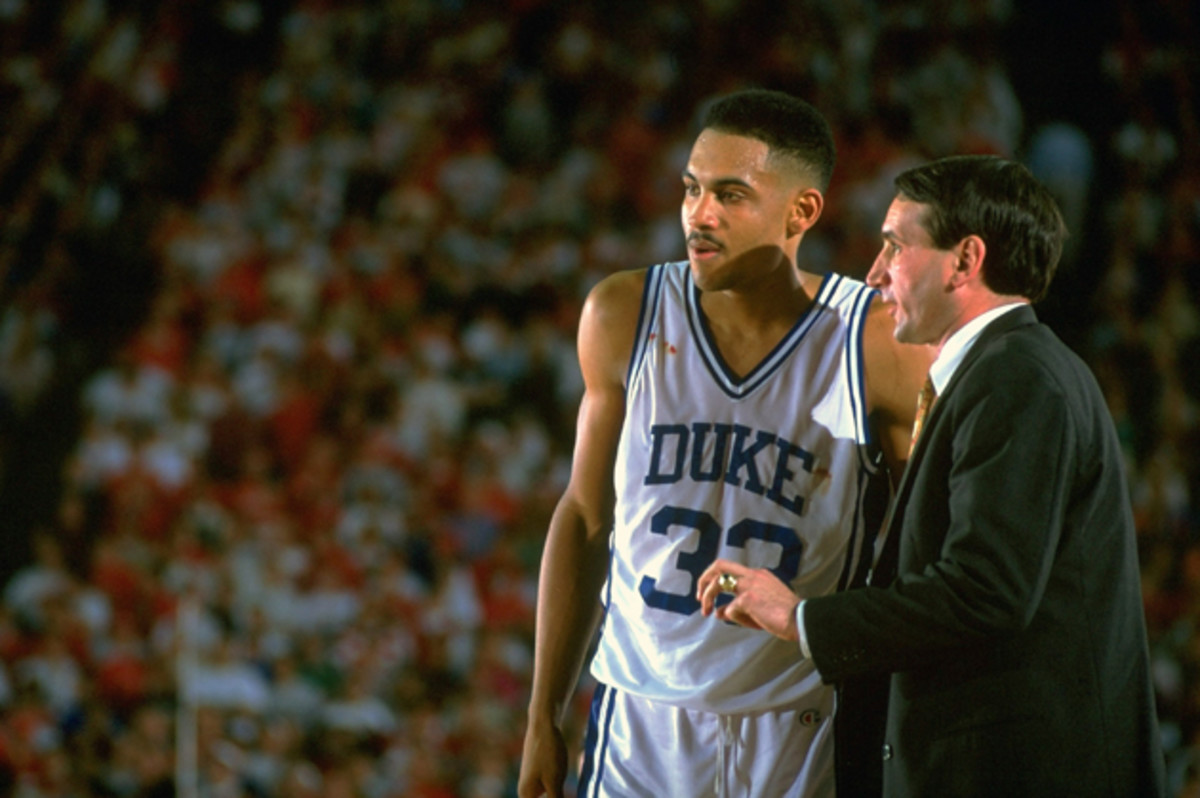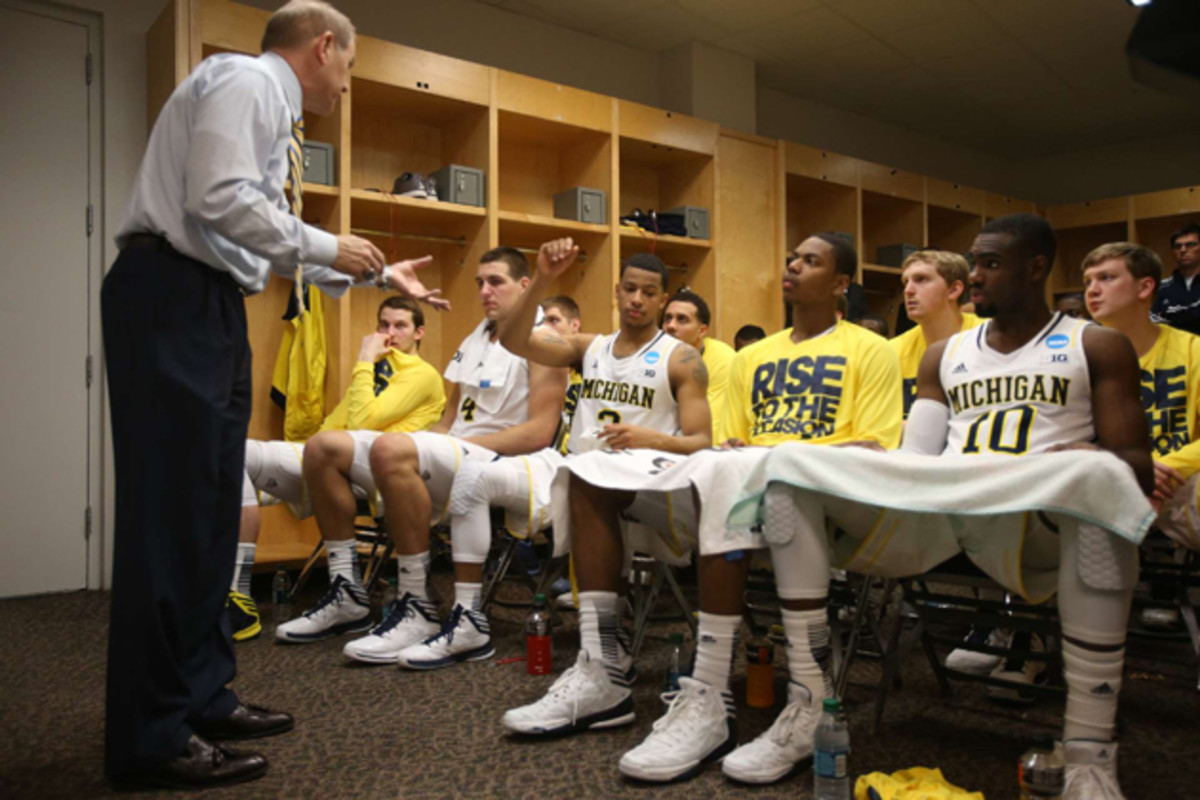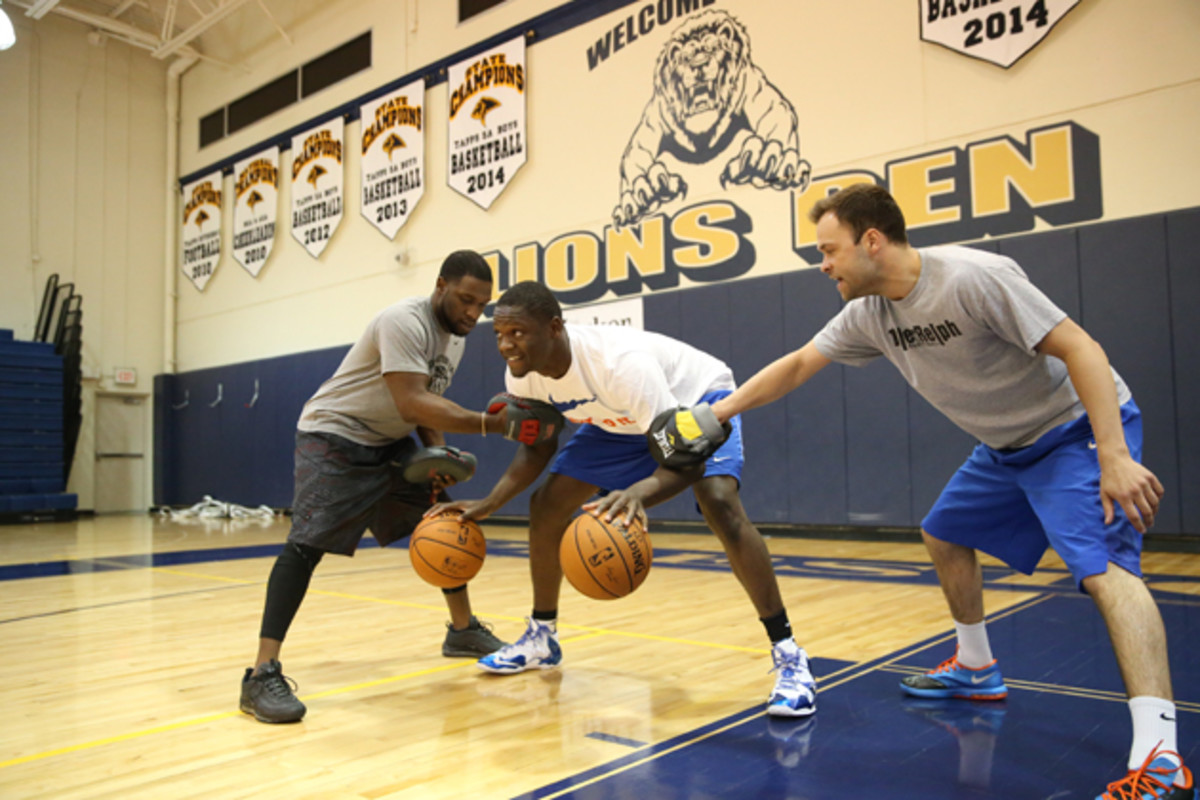Ready or Not: A new draft class learns NBA coaching isn’t always teaching

A hard hit off a screen from Celtics center Kris Humphries during a preseason game was all it took for Knicks guard Tim Hardaway Jr. to realize that he wasn’t in Michigan anymore. The cracking blow sent through his body was a resounding reminder that playing in the NBA was a big step up from his three-year college career with the Wolverines. But the competition isn’t the only change rookies experience at the next level – the coaching is different too.
“If you want to be pro, you have to hold yourself accountable. It’s about what you do when nobody’s looking,” says Hardaway, “In college, the coaching staff does more work with you individually. But at the next level, you have to do it all by yourself.”
Just as Hardaway did last year, some of basketball’s rising stars will make the jump from college campuses to the high-level hardwood after Thursday’s 2014 NBA Draft. With the one-and-done rule allowing college freshmen to leave school after completing just a single season, the NBA draft lottery will be dominated by young athletes, leaving both coaches and fans wondering: Are they really ready?

“In the NBA there is less teaching because there is that expectation of, ‘You should know this,’” says NBA TV analyst and 18-year veteran Grant Hill, who played at Duke under coach Mike Krzyzewski for four years. “There’s more of an emphasis on growing and learning in college.”
The difference in coaching stems from the nature of the professional game — 82 regular season games plus anywhere from 8 to 28 additional games for pre- and postseason, compared to about 40 in a complete college season — according to Hardaway and Greg Anthony, NBA analyst and former player. Anthony says that coaches at the professional level don’t have time to drill and create habits, and players don’t have the energy or the mental ability to be taught after playing four games in five nights.
“It’s hard to teach a tired athlete — it behooves a lot of young players to have a basic understanding of basketball that allows them to fit into the coach’s style,” says Anthony, who has stated that he thinks players like Kansas’ Joel Embiid should spend more time on campus polishing their game. “At the pro level, men are given instructions and they have the ability, because of their experience, to carry them out.”

More games on the schedule also translate into less practice time for NBA players. While college coaches can bring players in for workouts during summer classes, professional players are expected to train on their own during the offseason until mid-September when the team comes together again. Indiana Pacers coach Frank Vogel says that, because of limited practice time during the season, he emphasizes a stronger mental approach and focuses on developing his players through watching film.
“There’s a lot less you can do in terms of individual improvement and repetition because you have to make sure their legs are fresh,” says Vogel. “The pro level more than any other is about having a partnership with your players, managing personalities and taking a bunch of pieces and making them fit together.”
While an NBA coach must manage player personalities, it’s the job of the coaches before him to develop these characteristics. Steve Smith, high school coach at Oak Hill Academy in Mouth of Wilson, Va., has seen such players as Carmelo Anthony and Rajon Rondo come through his program and says that, at this time of the year, he receives quite a few phone calls from NBA scouts and coaches searching for the next young star. “They ask about their character, work ethic and life off of the court more than anything,” he says.

In his 15th year as head coach at Notre Dame, Mike Brey says his goal is to see his players improve over four years, both in basketball and in their handling of responsibilities off the court. Because the NBA is drafting a lot of potential in young athletes, Brey says that he thinks there is more of an emphasis on being able to teach the players “the college way,” but that task isn’t always part of the head coach’s role.
“In the pros, the best coaches are great managers of egos and can facilitate things,” Brey says. “The NBA is a players' league and coaches need to be in the background, whereas in college, coaches are the face because players come and go – that’s the difference.”
Under Krzyzewski, who has coached 13 current NBA players (only four of whom stayed through their senior year), Hill says, he learned lessons about thought-processes, approach and the ability to understand game scenarios – fundamental skills he recalled more toward the end of his career, at age 40. “Learning how to play like that is something that I feel has taken a bit of a slip, and it’s because of the path these players are taking before they get to the NBA.”
While players like Duke senior point guard Quinn Cook say team practices also focus on getting better individually, Hardaway says that at the pro level, there are fewer fundamental drills and more maintenance.
“There isn’t as much teaching in the NBA, but there shouldn’t be,” says Anthony. “They don’t teach you in corporate America, right?”
